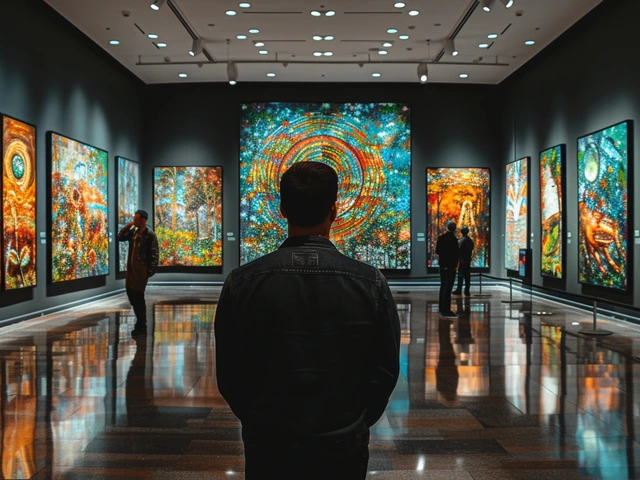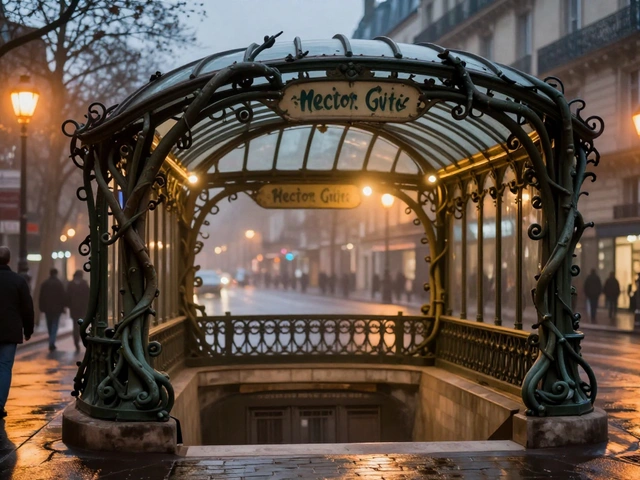Understanding the Intricacies of Gothic Art
The hypnotic grandeur of Gothic Art has been captivating art enthusiasts for centuries. Born in the Medieval era, it reflects a world of elegance, complexity, and emotional intensity encapsulated within stone sculptures and stained-glass windows. It is more than just an art form; it is a reflection of an era filled with mysticism, faith, and earthly beauty. From the towering Gothic cathedrals to intricate jewelry, this timeless art style continues to influence modern aesthetics.
Unveiling the magical world of Gothic Art makes me relive my visit to the Notre-Dame cathedral, with Melody in tow, a few years back. Its grandeur and eye-catching pinnacles had us both enchanted. Our shared enthusiasm about art always ignites my passion for blogging about art forms around the world, Gothic Art being one of them.
The Initial Strokes of Gothic Art
Both Melody and I find the early expressions of Gothic Art fascinating. Its birth during the High Middle Ages of France, around the 12th century, was a transformative period. Gothic Art broke the chains of Romanesque Art's brute nature, introducing a new language of sophistication, lightness, and emotional depth within the canvas of cathedrals, frescoes, and sculptures.
Gothic Art led us into an era where architecture and art were inextricably woven together. While Romanesque Art was recognised by its heavy stonework and round arches, Gothic Art introduced the world to pointed arches, tall spires, and light-flooded interiors. This is a delightful revelation that fully came to life when I strolled around Notre-Dame, closely observing the flamboyant gothic style it so elegantly showcased.
Embracing the Emotion in Gothic Art
What distinguishes Gothic Art from its predecessor is the emotional charge it carries. It’s not just about awe-inspiring architecture; it's about inducing a feeling of wonder, admiration, and spiritual transcendence in the beholder. Much like a well-written musical note can transport us into an unseen realm, Gothic Art, with its breathtaking celestial vaults, luminous stained glass, and slender pillars, is designed to lift our spirits, a feeling I vividly remember from my visit to Notre-Dame.
One interesting tidbit that Melody pointed out on our Paris trip was the symbolism embedded in the Gothic stain-glass windows. They narrate Biblical tales and saintly sagas, enlightening the viewer while filling the cathedral with celestial light, creating a heavenly ambiance.
Appreciating the Innovations within Gothic Art
Gothic Art didn't remain stagnant; it evolved and innovated across the centuries, introducing many architectural innovations. One of the main technical advances was the flying buttress – an external structural element that allowed buildings to grow upwards, soaring towards the sky. The development of ribbed vaulting was another critical innovation that gave Gothic architecture its characteristic skeletal structure.
You might wonder, how can a cold stone structure rise towards the sky? But when you stand beneath the towering pinnacles of a gothic cathedral, like I did in Notre-Dame, you'll understand the seemingly impossible amalgamation of stone and sky! Elements such as the flying buttress and ribbed vaulting made it possible for Gothic architecture to reach new heights, both literally and metaphorically.
Gothic Art's Influence on Modern Aesthetics
One cannot discuss the significance of Gothic Art without mentioning its impact on modern aesthetics. From the revivalist movements of the 19th century to the inspirations drawn by contemporary artists, Gothic Art leaves its glorious imprint everywhere. You can see its influence in the high-speeds of Harry Potter's Hogwarts Castle or the dark aesthetics of Tim Burton's movie sets.
From Gothic-style tattoos to home décor, the timeless charm of Gothic Art continues to inspire the world even today. It's not just about historical buildings or past centuries. Being a lover of art and aesthetic trends, I personally enjoy incorporating a hint of Gothic into my home décor, a part of which are the tiny cathedral shaped bookends on my study desk!
Bringing our journey through the world of Gothic Art to an end, it is clear to see that this isn't just an ancient chapter in art history, but a continuing global influence. The fusion of emotion and innovation, the admirably aspiring architecture, and the incredible attention to detail collectively make Gothic Art much more than just a medieval art form. This captivating style of art encapsulates a universe within itself and continues to inspire and draw admiration from across the world, proving its timeless relevance.




